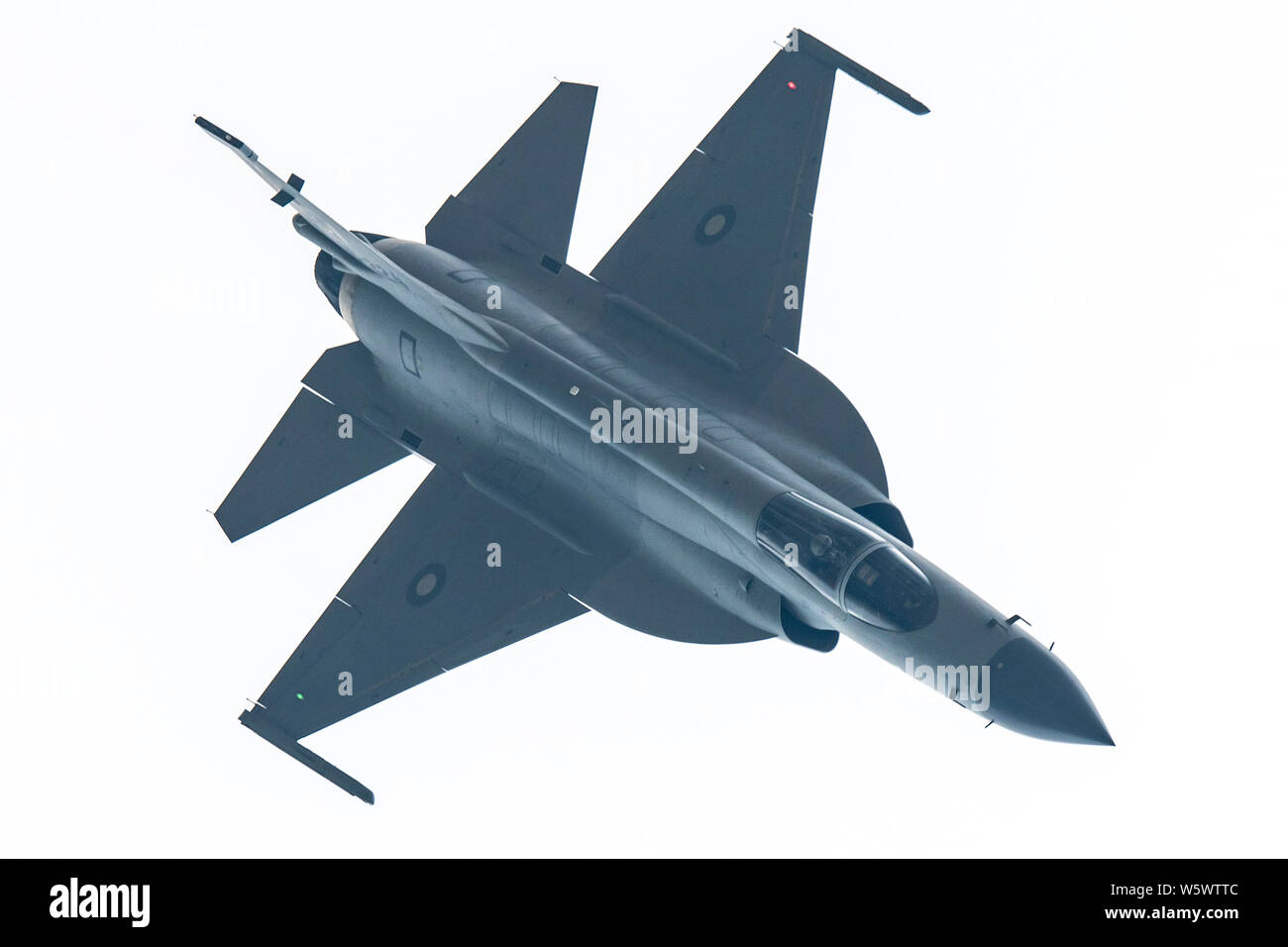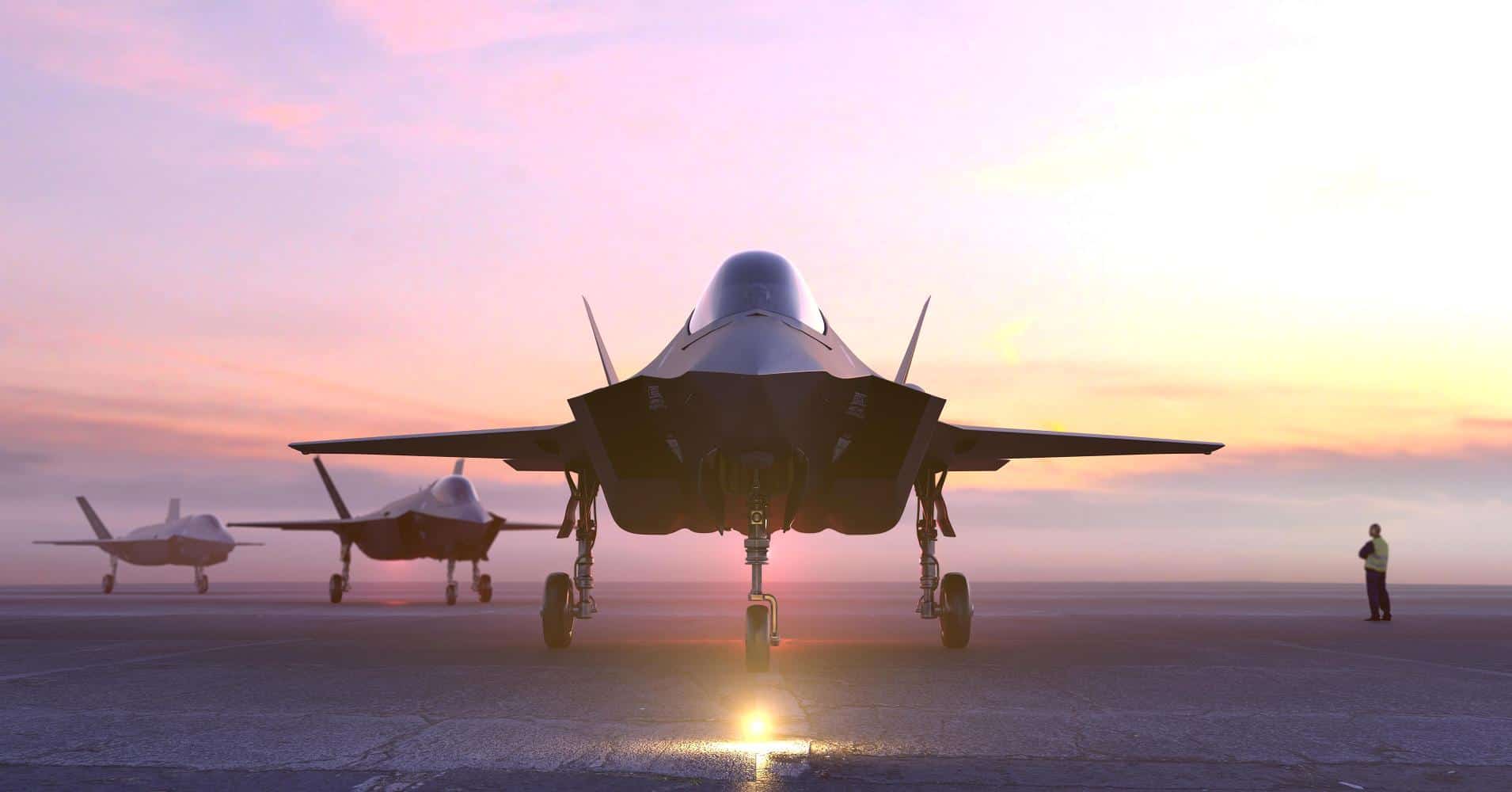Parts Of A Fighter Jet - The need for large-scale air transport has been the center of aircraft production. As one of the world's most important industries, airlines are key to many aspects of the global economy, from international trade and tourism to the regular movement of people and goods, from large machinery to agricultural goods and personal effects. The United States has the most airlines and buys the most aircraft. In other countries there is one major flag carrier and in some cases private airlines. in the region. New independent low-cost airlines in the US and Europe, especially shorter intercity flights, are also increasingly important customers.
Smaller civil aircraft, with 15-100 seats, are generally used for regional or aviation services and can be turboprops or jets. Although the United States has been a leader in the production of many types of aircraft, it still lacks a foothold in the market. Aircraft service in the region. ATR Association (Avions de Transport Regional), formed as a partnership between French Aerospatiale and Italian Aeritalia, has established itself as the market leader with its turboprops. Other companies include Bombardier, Fairchild Dornier, Saab and, until bankruptcy in 1996, the Dutch Fokker Group, which has an extensive line of turboprops and jets in the region. Manufacturers outside the Western bloc include Brazil's Embraer, Indonesia's IPTN (Industri Pesawat Terbang Nusantara) and Russia's Ilyushin, Yakovlev and Tupolev.
Parts Of A Fighter Jet

In the large commercial aircraft sector, where there are seats from 100 to 550, competition and huge investment risks have reduced the number of suppliers competing for the world market - Boeing and Airbus. Together, these companies offer 11 different aircraft families with numerous variants to meet the needs of each user. Their customers are airlines, shipping companies and an increasing number of rental companies. At the beginning of the 21st century, the vast industry of the former Soviet Union was in a state of uncertainty, but the design bureau of Russia Tupolev and Ilyushin and Ukrainian Antonov looked to Western cooperation and investment to maintain their production and win foreign customers. Former Soviet Union. Apartment building.
Sonic Booms As Fighter Jets Are Scrambled To 'suspicious' Plane
The majority of military aircraft are fighters, followed by bombers, transports and tanks, early warning and surveillance aircraft, and propeller-driven and jet-powered trainers. As in the case of commercial aircraft, sophisticated technology and enormous capital requirements have reduced the number of suppliers. In addition, the end of the Cold War initially reduced the need for military aircraft worldwide, although conflicts in the Persian Gulf and the Balkans in the 1990s highlighted the need to maintain a significant air force. Some developing countries buy or build fighter jets and train them for their own needs in order to maintain their traditional aerospace/defense industries. (In some cases, purchase agreements with foreign suppliers include provisions on the scale of development and assembly of indigenous peoples and thus the transfer of technical knowledge and skills.)
In the United States, two companies build fighter jets - Boeing and Lockheed Martin. In Europe, more than in the United States, companies are involved in the production of fighter aircraft, such as the Eurofighter Typhoon, which was developed in the mid-1980s and 1990s by the German company Dasa, British Aerospace, Alenia of Italy and CASA of Spain and is. First flew in prototype form. In 1994. Companies operating independently with small fighter jets include France's Dassault and Sweden's Saab. With the exception of offering stealth features, European manufacturers market fighters that are comparable in capabilities to the United States around the world. In Russia, only Sukhoi and MiG fighters are produced. A number of companies have undertaken indigenous production for national needs, including Japan's Mitsubishi, Kawasaki and Fuji, Taiwan's Aero Industry Development Center, and India's Hindustan Aeronautics Ltd.
Military transport aircraft are used to transport troops and equipment such as tanks, vehicles and helicopters. With modifications, they (as well as airplanes) serve as in-flight refueling vessels. Compared to the cargo version of commercial aircraft, military transports have special advantages such as short take-off and landing, cargo ramps, aircraft capacity and parachute doors. In the United States, Boeing builds the C-17 Globemaster III with four turbo engines. Airbus Military, a subsidiary of Airbus Industrie, is leading a multinational group of leading manufacturers in the development of four turbocharged A400M transports for the European Air Force. Ukrainian manufacturer Antonov makes many transports, including the An-225 Mriya, a six-turbofan design originally conceived for transporting large external payloads for the Soviet space program.
With the advent of missiles after World War II and subsequently the end of the Cold War, the need for new military bombs became limited. Only one model, the Northrop Grumman B-2, has been produced in the United States until recently. Built in the 1980s, the B-2, a stealth bomber with a 23-ton weapons capacity, is the world's most expensive aircraft, costing nearly $1 billion per aircraft. This page shows the parts of the aircraft and their functions. An airplane is a means of transportation designed to transport people and goods from one place to another. Aircraft come in many different shapes and sizes, depending on the mission of the aircraft. The aircraft shown on this slide are turbine powered aircraft that have been selected as representative aircraft.
All Fighter Aircraft Of India
For a plane to fly, one must lift the weight of the plane itself, fuel, passengers and cargo. The wings create most of the lift to keep the plane aloft. To create lift, the aircraft must be pushed through the air. Air resists movement in the form of aerodynamic drag. Modern airplanes use wingtips to reduce drag. The turbine engine, located under the wing, provides thrust to overcome drag and propel the aircraft into the air. Small, low-speed aircraft use propellers for their propulsion systems instead of turbine engines.
To control and control the aircraft, small wings are on the back of the aircraft. The tail usually has a fixed horizontal part, called the horizontal stabilizer, and a fixed vertical part, called the vertical stabilizer. The function of the stability control is to stabilize the aircraft, to keep it flying straight. The vertical stabilizer prevents the nose of the aircraft from swinging from side to side, called yaw. The horizontal stabilizer prevents the up and down movement of the nose, called pitch. (In the Wright brothers' first airplane, horizontal stabilizers were placed in front of the wing. The arrangement was called a canard, after the French for "duck").
On the back of the wing and the stabilizer is a small moving part that is attached to the fixed part by hinges. In the picture, these moving parts are brown. Changing the rear part of the wing will change the force produced by the wing. The ability to switch forces gives us a way to command and control the aircraft. The hinged part of the vertical stabilizer is called the rudder; It is used to bend the tail left and right, seen from the front of the fuselage. The horizontal part of the frame is called the elevator; It is used to bend the tail up and down. The outer part of the wing is called a spar; It is used to roll the wings from the side. Most aircraft can also roll from the side using a spoiler. A spoiler is a small plate that is used to disrupt the flow of the wing and change the thrust by reducing the lift when the spoiler is used.

Wings have extra hearts, the parts that follow close to the body are called flaps. Flaps are used during takeoff and landing to increase the power produced by the wings. In some aircraft, the leading edge of the wing will also flex. The rim is used during takeoff and landing to generate additional power. A spoiler is also used during landing to slow down the aircraft and counter the flaps when the aircraft is on the ground. The next time you fly an airplane, notice how the shape of the wing changes during takeoff and landing.
Defence Department Gets Approval To Spend $7 Billion On 16 F 35 Fighter Jets, Sources Say
The fuselage or body of the aircraft holds all the parts together. The pilot sits in the cockpit at the front of the plane. Passengers and cargo are transported on the back of the fuselage. Some aircraft carry fuel in the fuselage; Others carry fuel in their wings.
As mentioned above, the configuration of the aircraft in the picture was chosen only as an example. Each aircraft may be configured differently than this aircraft. The Wright Brothers 1903 Flyer has a pusher and an elevator at the front of the plane. Fighter jets often have their jet engines embedded in the fuselage rather than slung under the wings. Many fighter jets also combine horizontal stabilization and elevator into a single fixed surface. There are many possible aircraft configurations, but all configurations must allow for the four forces required for flight. The F-35 has a significant proportion of components manufactured by the UK, with up to 10-15% of each aircraft sold being built or developed in the UK.
As a Tier 1 partner only, the UK has received significant economic benefits from the F-35. British industry will build more than 3,000 F-35s planned.
The Ministry of Defense said that the plan will generate significant export revenue and economic growth. It is estimated that the project will be built during
Saddled With Problems, New F 35 Fighter Jets Can't Get Enough Spare Parts
Drawing of a fighter jet, inside of a fighter jet, cost of a jet fighter, price of a fighter jet, speed of a fighter jet, fly a fighter jet, picture of a fighter jet, rent a fighter jet, parts of a fighter jet cockpit, cost of f35 fighter jet, buy a jet fighter, cockpit of a fighter jet

0 Comments